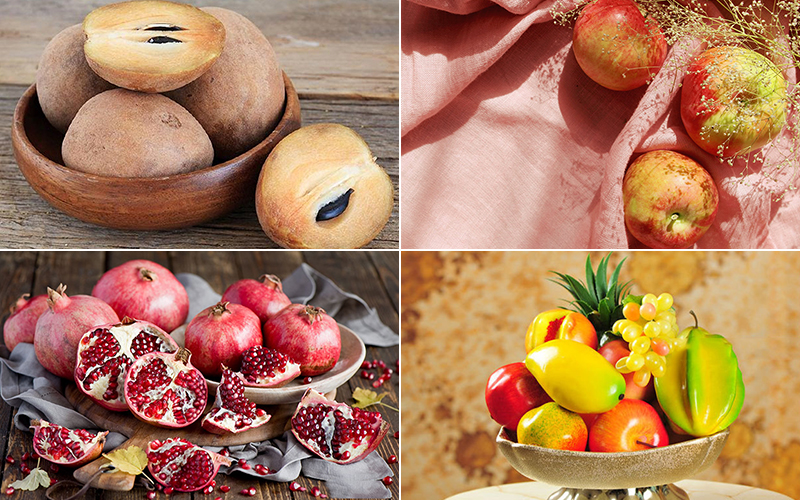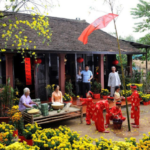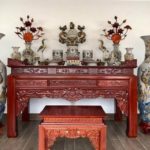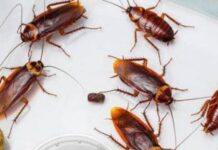It is customary to offer a selection of the finest and most beautiful fruits to our ancestors during the Lunar New Year celebrations, expressing our respect and wishing for luck and prosperity for the family in the coming year. Therefore, it is essential to be aware of the following types of fruits that are considered inauspicious and should be avoided when preparing the fruit tray.
The traditions and cultural beliefs of each region influence the arrangement and taboos associated with the types of fruits included in the tray:
1 Northern Region
Durian
 Durian
Durian
The Northern region does not have specific taboos regarding the types of fruits included in the Lunar New Year fruit tray. However, durian is typically not chosen for this occasion. The belief is that its thorns may displease the deities, leading to a year filled with challenges and difficulties in various aspects of life.
Additionally, the altar is considered a sacred and serene space, and the chosen fruits should have a mild and pleasant fragrance. Hence, durian, with its strong aroma, is usually absent from the fruit tray. Furthermore, durian is more commonly associated with the Southern region and has only gained popularity in the North in recent years.
2 Central Region
Papaya
 Papaya
Papaya
The Central region, being in the middle of the country, is influenced by the traditions of both the Northern and Southern regions. As a result, people in this region also avoid fruits with unlucky names (as in the Southern region) when preparing the Lunar New Year fruit tray, with papaya being a notable example.
The pronunciation of “papaya” in the Central regional accent sounds similar to “enough enemies,” which may lead to conflicts and disharmony in relationships.
3 Southern Region
Among the three regions, the Southern region has the most taboos regarding the types of fruits included in the Lunar New Year fruit tray. The people here attach great importance to the semantic associations of fruit names, avoiding those with “unlucky” connotations:
Banana
 Banana
Banana
While the Northern region always includes bananas in their fruit trays, the Southern region does the opposite. They believe that the word “banana” sounds similar to “stooping,” indicating decline and a lack of progress and success.
Pear
 Pear
Pear
People in the Southern region also avoid placing pears on the fruit tray because they believe that “pear” sounds like “dragging,” indicating stagnation and failure in various endeavors.
Orange
 Orange
Orange
A common saying in the Southern region is “working for nothing,” and as a result, oranges are also considered inauspicious. They are believed to signify obstacles and a lack of smoothness in one’s endeavors and misfortune in life.
3 General Notes on Inauspicious Fruits
When selecting fruits for the tray, it is advisable to avoid overly ripe or quick-ripening fruits such as mangoes, peaches, and persimmons. When left for extended periods, these fruits tend to spoil quickly, attracting flies and insects, which is unsuitable for the altar.
Fruits with strong odors should also be avoided, as the altar is a sacred and clean space. Opt for fruits with mild fragrances instead.
Fruits with bitter, spicy, or sour flavors are also typically not placed on the altar, as they may evoke associations with the bitterness and hardships of life.For further reference:
 General Notes on Inauspicious Fruits
General Notes on Inauspicious Fruits
Additionally, some fruits have names that are not considered “pleasant-sounding,” such as Sapoche (which sounds like “criticize”), jackfruit (called “bom” in the Southern region), pomegranate (which sounds like “grenade”), and durian (associated with “sadness”).
Many people also avoid using artificial fruits, deformed fruits, or fruits with an unusual shape for the tray, as they believe that doing so shows a lack of respect for their ancestors and deities and may bring bad luck.
Further reading: and what should we avoid doing to attract good luck throughout the year?
Hopefully, this information has helped you understand the types of fruits considered inauspicious for the Lunar New Year fruit tray. As the saying goes, “Respect the ancestors, and they will bless you; heed the taboos, and you will be safe.” So, it’s essential to be mindful of these traditions to usher in a fortunate new year.






































